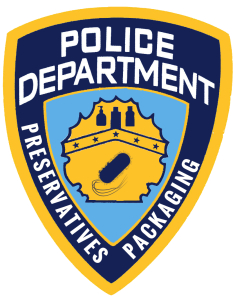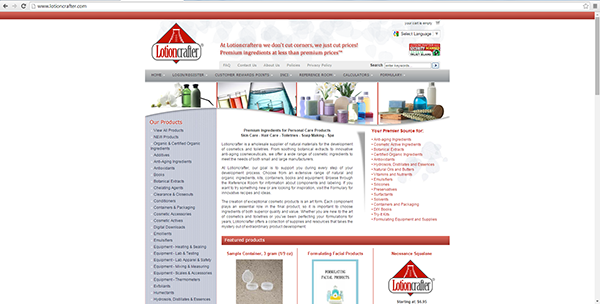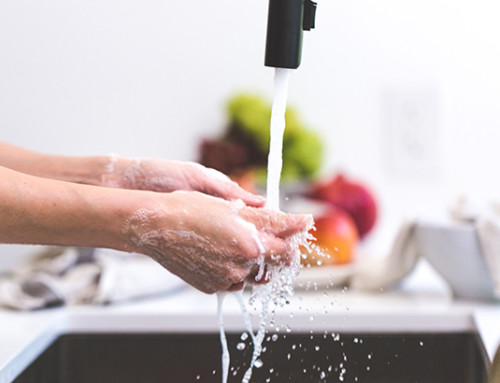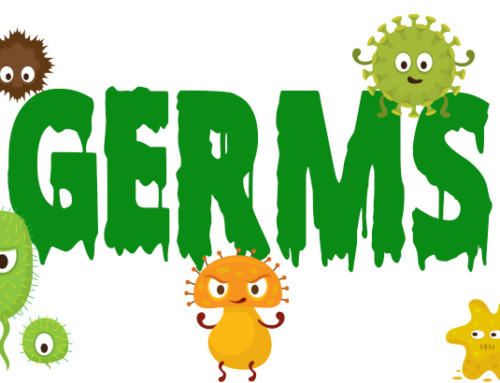Preventing Contamination in Cosmetics
Two years ago, we were demonstrating how to use dipslides, and we tested a spectator’s mascara brush. Above is an image of the dipslide after 48 hours of incubation. Gross, right?
First, we learned that you should NEVER share cosmetics, unless of course they’ve been disinfected.
Second, we learned that our eyelids are like a zoo for bugs.
And third, we knew we needed to learn more. We know very little about cosmetic manufacturing and the steps taken to prevent microbe growth in personal care products.
We think it’s about time we take a closer look at this industry in a 3-part post:
- How to prevent contamination during and after the manufacturing process
- How to test for contaminants & FDA regulations on counts
- What contaminants to look for when testing cosmetics
Finding the right source for this information was a no-brainer.
Lotioncrafter, LLC
Lotioncrafter, LLC was founded by Jenny Welch in 2002. After starting Caprabella in 1996, Jenny’s epiphany came when she realized that the right combination of her experience and her interest in cosmetic formulations was embodied in her new company, Lotioncrafter.
Lotioncrafter gave her exposure to the wide and growing audience of small-business cosmetic crafting. The rest, as they say, is history – Lotioncrafter has quickly grown to become a watchword for innovative yet affordable cosmetic ingredients ideally suited to the focused markets their clients support.
How to Prevent Contamination DURING the Manufacturing Process
Most cosmetic products contain water and nutrients that microbes can use to grow and flourish. With personal care products, the introduction of microbes is inevitable.
Contaminated products can end up looking like that expired moldy food in your fridge if you’re not careful, and certain bacteria can lead to skin infections.
We want to help you avoid that, so here are some simple steps you can take to reduce contamination during the manufacturing process:
- Start with clean hands, a disinfected work surface, and clean utensils.
- Wear gloves.
- If working from home, avoid manufacturing in/near the kitchen where you can easily get cross-contamination from food.
- Use distilled water, not tap water. Tap water can contain trace amounts of bacteria.
- Follow heating instructions. Lotioncrafter often recommends heating the initial ingredients to 176°F, covering, and holding for 20 minutes to kill bacteria and mold spores.
- Our hands are full of bacteria, so avoid dipping your fingers in the products, jars and bottles.
- Make sure your final packaging is airtight.
How to Prevent Contamination AFTER the Manufacturing Process
The above steps are helpful in reducing contamination, but without a sterile environment, there will still be some microbes that slip through the cracks. On top of that, once the product is opened and used, it’s bound to become a microbe party…unless of course, you bring the party police.
We know, party police are usually a real bummer, but in this case, you’ll want to invite them.
Meet our friends, Preservatives and Packaging.

Preservatives kick in the microbial front door. They often have anti-microbial properties that not only prevent future spoilage or skin infections, but they also extend the life of your product.
Packaging is the back-up. Containers that avoid direct contact with skin are a good idea. An article in the Applied and Environmental Microbiology (AEM) journal shows a study that has proven flip caps and pump-top containers have the lowest amount of contamination.
Lotioncrafter is a great source for more information on preservatives, and their website is full of resources you can use in every step of the process.
Next week, we’re posting part two of our Tech Talk with Lotioncrafter, where we’ll take a look at how best to use microbial test kits for cosmetics, and some of the regulations in place. For now, we’ll leave you to continue perfecting your manufacturing process to keep contaminants at bay.
Keep an eye out for our Facebook giveaway of a Lotioncrafter Microbial Test Kit!








Leave A Comment